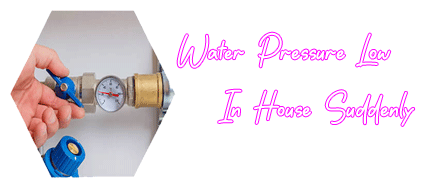Water is an essential resource in every home, necessary for tasks like cooking, cleaning, bathing, and washing. Homebuyers often prioritize features such as high-quality pipelines, reliable water supply, and other utilities. However, even with a well-built home, issues like low water pressure in the house suddenly can arise, disrupting daily routines.

Water pressure problems can result from various factors, such as pipe corrosion, excessive pipeline length, leaks, or increased water demand. Identifying the causes and implementing solutions can help homeowners avoid such inconveniences.
Steps to Identify Low Water Pressure
Simple Bucket Test
A quick way to detect water pressure issues is by performing a bucket test.
Ensure all taps are turned off.
Use a 5-liter bucket and measure the time it takes to fill it completely.
If it takes more than 30 seconds, there might be a water flow issue.

Check the Main Water Valve
Follow these steps:
Turn the valve clockwise halfway and wait a few minutes.
Gradually open the valve fully to allow water to flush out any unwanted deposits.
This can improve water flow by clearing minor blockages.
Common Causes and Solutions for Sudden Low Water Pressure
Pipe Corrosion or Leakage
Corrosion or leaks in the pipeline can significantly reduce water pressure. Conduct a pipe inspection to identify these issues.
If you cannot visually inspect the pipes, consider hiring a professional plumber to locate and repair damaged areas.
Addressing leaks promptly helps prevent water wastage and further pressure drops.
Aerator Clogs
Faucet aerators can become clogged over time, reducing water flow.
Rinse the screen thoroughly to remove debris before reassembling and reinstalling it.
This simple fix can restore water pressure at specific fixtures.
Pressure Regulator Malfunction
A faulty pressure regulator can cause uneven or low water pressure throughout the house.
Consult a professional plumber to inspect and replace the regulator if necessary.
Avoid attempting DIY repairs, as incorrect handling can damage the pipeline.
Shared Water Supply
Sharing a water supply line with neighbors can lead to reduced pressure, especially during peak usage times.
Try adjusting water usage schedules to avoid high-demand periods.
Blocked Pipelines
Mineral deposits and debris can block pipes, restricting water flow.
Professional plumbers have the tools and expertise to clear these blockages effectively.
Regular maintenance can prevent buildup and ensure smooth water flow.
Tips to Maintain Proper Water Pressure
Regular Maintenance: Schedule periodic inspections to detect and fix potential issues.
Avoid DIY Repairs: While some fixes are straightforward, more complex problems require professional assistance.
Monitor Water Usage: Stagger heavy water use to avoid strain on the pipeline system.
Replace Old Pipes: Upgrade outdated or corroded pipelines to improve water pressure and efficiency.
By understanding the common causes of sudden low water pressure in the house and taking proactive measures, homeowners can maintain a steady water supply and avoid disruptions. Proper maintenance and timely repairs not only ensure optimal water flow but also extend the lifespan of your plumbing system.




